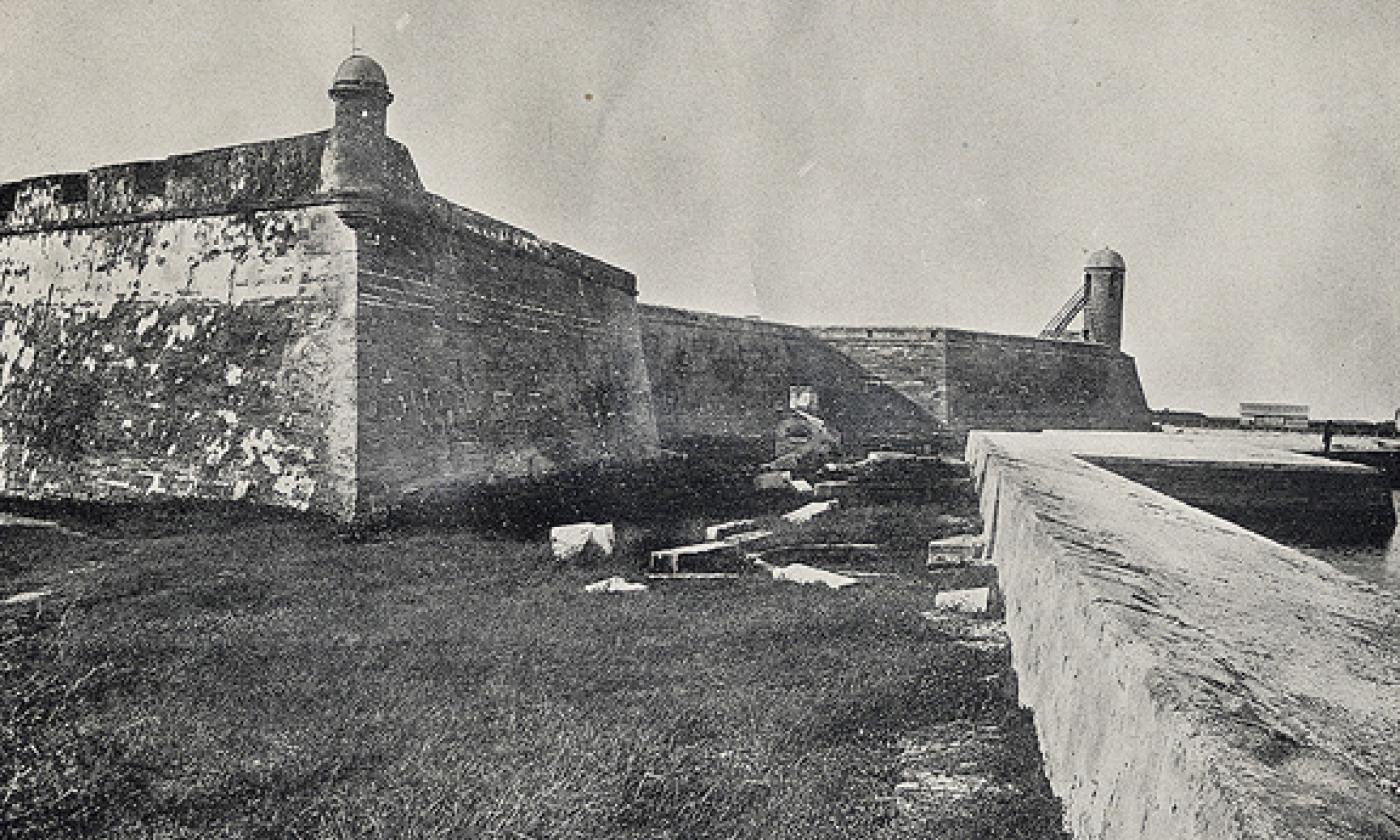
Glimpses of St. Augustine
View images of St. Augustine from over a hundred years ago.
Glimpses of St. Augustine
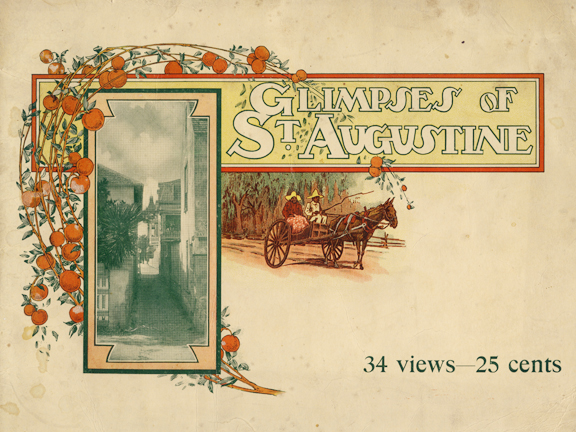
"Glimpses of St. Augustine" is a collection of historical images of St. Augustine, taken in the late 1800s or early 1900s. Browse these photos to peek into the architecture and feel of what the Ancient City was like a century ago.
(Captions by Cheyenne B. Koth)
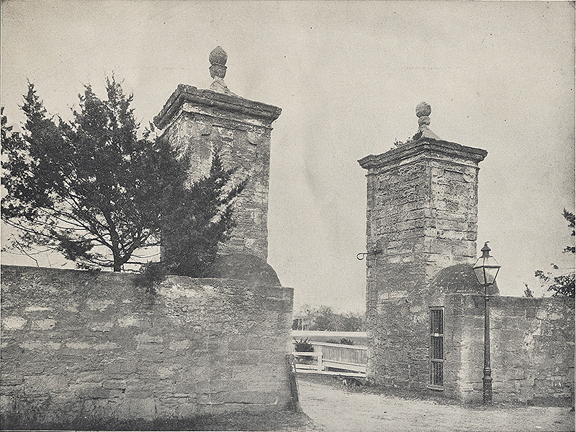
CITY GATEWAY —
The present St. Augustine City Gates were built in 1808 during the Second Spanish Period of St. Augustine's history. They are part of the Cubo line, which protected the city's northern barrier. The gate was initially made of wood and was built in 1739. These coquina stone pillars mark the beginning of St. George Street, which is now a bustling tourist hub. In 1907, the National Society of the Colonial Dames of America in the State of Florida erected a marker on the City Gates to preserve their historical significance.
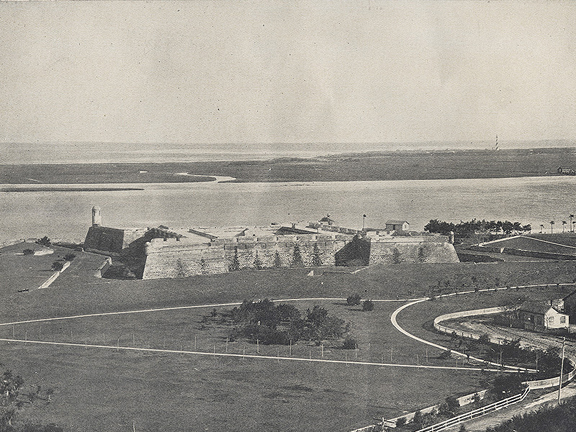
FORT MARION LOOKING TOWARDS THE SEA —
Though it is now known as the Castillo de San Marcos National Monument, "the fort" (as locals call it) has carried several names. When the Second Spanish Period ended and Florida became a US territory, it became a US Military outpost and was renamed Fort Marion, after the infamous South Carolina Swampfox, Francis Marion. Its strategic location which once assisted military powers in defending the Ancient City now invites visitors to learn about America's history (not to mention offers an amazing view of Matanzas Bay).
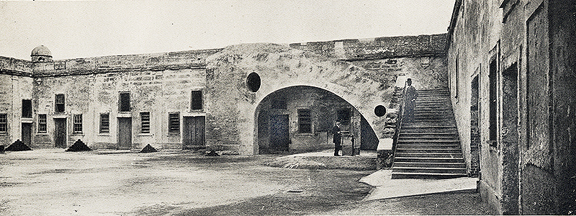
INTERIOR FORT MARION —
The inner chambers of the Castillo de San Marcos / Fort Marion have long entranced visitors to the city. They have served many different purposes — from barracks for soldiers to cells for prisoners to interpretive spaces of public learning. American history has played out in the small, dank, coquina-walled rooms of this fort.
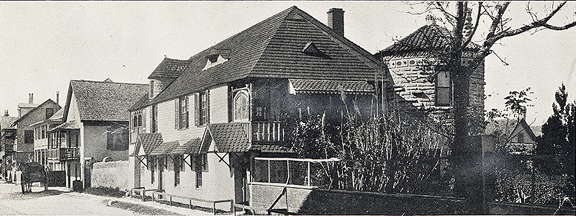
THE OLD HOUSE ON ST. FRANCIS STREET —
The Gonzalez-Alvarez House, also known as 'The Oldest House' is a National Historic Landmark on St. Francis Street in St. Augustine, Florida. According to the National Parks Service, evidence suggests that the site of the house has been occupied since the 1600s but the present house began construction in 1723. The tower that is visible on the right side of the image was added between 1886 and 1900.
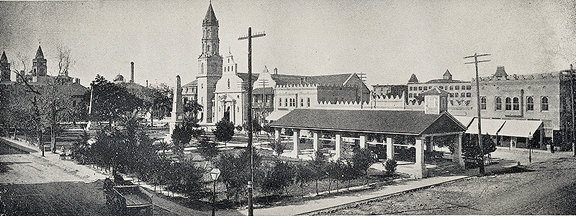
THE PLAZA, MONUMENT, AND CATHEDRAL —
The Plaza de la Constituciónhas long been a site of St. Augustine's cultural, political, and religious history. In the center of town just on the bayfront, this public greenspace holds many monuments that commemorate American history and sites in which history has occurred(like the St. Augustine Public Market, which is visible in the above image).
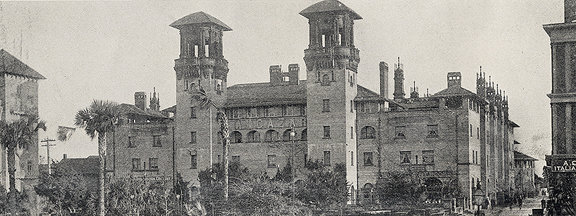
THE ALCAZAR —
Now the home of the Lightner Museum, the Hotel Alcazar was once a popular resort hotel that boasted luxurious amenities for Gilded Era visitors. From biking trails to saunas and swimming pools, The Alcazar was a sister hotel to Henry Flagler's Ponce de Leon Hotel, having also been designed by Carrere and Hastings.
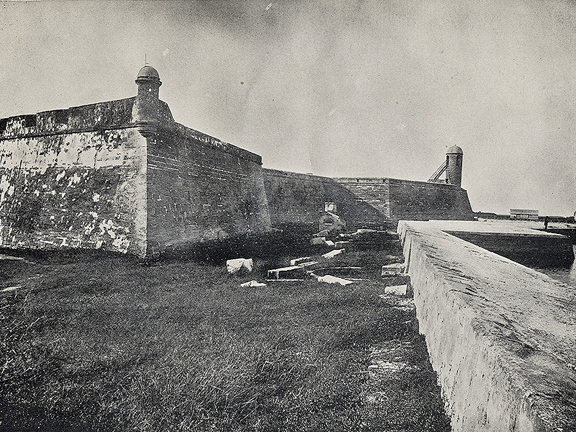
FORT MARION, WATER BATTERY —
When Florida became an American territory in 1821, the city of St. Augustine underwent many changes — in population, leaders, and appearance. One major change for the Castillo de San Marcos (which had then been renamed Fort Marion) was the 1838-1842 modification of the already-existing Spanish sea wall. The new sea wall made room for a new barbette gun, as well as a Hot-Shot Furnace — the remains of both can be seen in the above image.
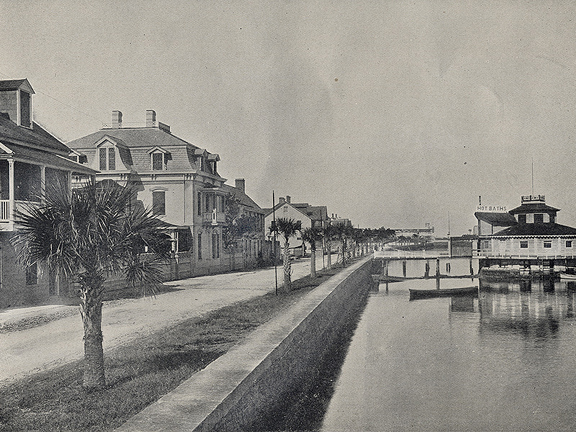
SEA WALL —
The St. Augustine Sea Wall was first constructed in 1696, just after the Castillo de San Marcos was completed. During Florida's early Statehood (around 1832), citizens of the city gathered together to secure federal funding for the sea wall to be improved. After a certain amount of drama between the engineers, the sea wall was completed in 1846 and has since been updated as the city has expanded.
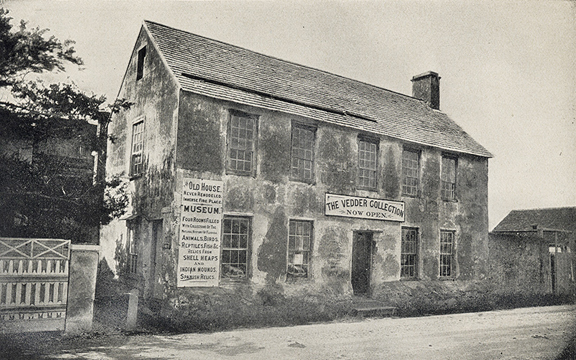
THE VEDDER MUSEUM —
Once located on the corner of Avenida Menendez and Treasury Street in St. Augustine, The Vedder Museum was run by St. Augustine dentist Dr. John Vedder. His collection included taxidermied animals and marine life as well as other oddities that either struck his fancy or were related to St. Augustine. Photographs of the interior of The Vedder Museum (which can be found in the St. Augustine Historical Society collections) reveal that Vedder's exhibits also talked about the history of the building, which he believed to have been built for Spanish Royal Officials in 1689.
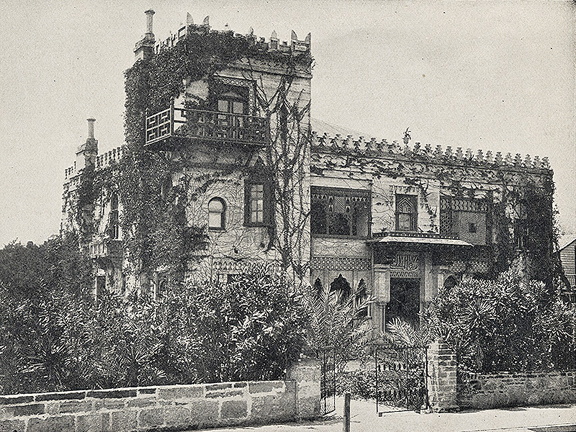
THE VILLA ZORAYDA —
The Villa Zorayda was built in 1883 to be the winter residence of Franklin W. Smith, a Bostonian merchant from a wealthy family. The impressive poured concrete and coquina building was a site of recreation and revelry, having been a club, casino, and speakeasy in different eras. The Mussallem family have been the owners and proprietors of the Villa Zorayda for over 109 years, according to the Villa Zorayda website. The building is now a beautiful museum that discusses the history of St. Augustine and hosts an impressive antique collection. Notice how the building was overgrown with vines during the late 1800s / early 1900s — this was probably a stylistic choice, meant to emphasize the antiquity of the Villa Zorayda.
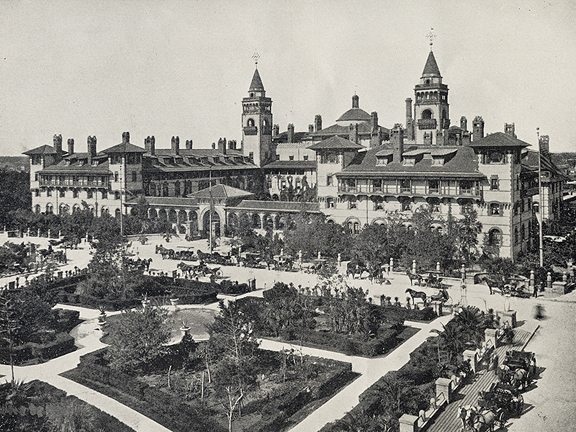
THE PONCE DE LEON —
The Ponce de Leon Hotel had its grand opening in January of 1888, after being constructed in just 18 months. It was the brainchild of Robber Baron Henry M. Flagler, who intended to turn St. Augustine into the 'Winter Newpark' of the Gilded Era. His wish came true, and countless Northern tourists have visited St. Augustine since.
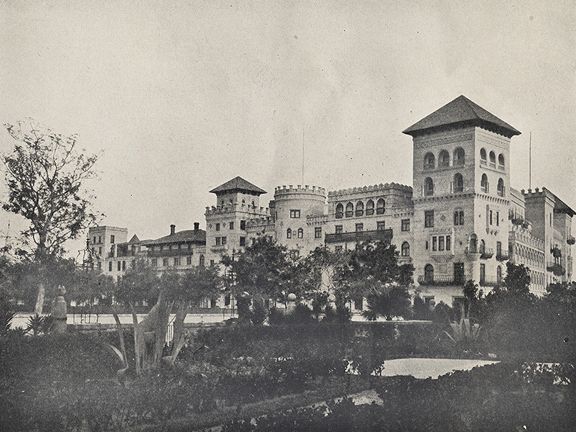
HOTEL CORDOVA —
Now (and initially) called the Casa Monica (after the mother of Saint Augustine of Hippo) this grand hotel was also built by Franklin W. Smith, who constructed the Villa Zorayda. It debuted the same year that the Ponce de Leon Hotel opened, in 1888. However, Franklin apparently did not have the same business sense as his neighbor, Henry M. Flagler. Flagler bought the Casa Monica the same year it opened and renamed it the Cordova Hotel. Nearly two centuries later, the building is operated as the Casa Monica Resort & Spa and has hosted many illustrious guests.
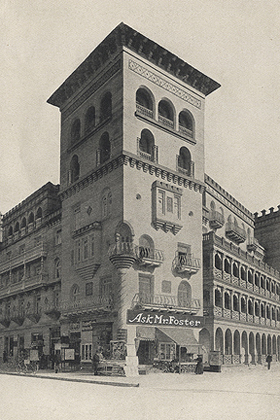
CORDOVA CORNER —
This image shows the corner of King Street and Cordova Street in St. Augustine, which is bordered by the Casa Monica Resort and Spa / Cordova Hotel. The street-level sign that reads 'Ask Mr. Foster' is the entrance to a travel agency of the same name, where visitors could buy steamship maps and souvenirs.
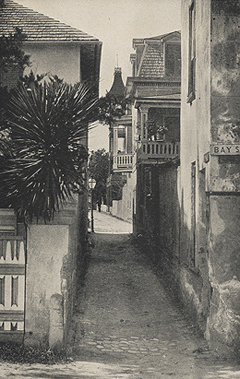
TREASURY STREET FROM BAY STREET —
Known as the narrowest street in the United States, local legends say that Treasury Street was built to be only wide enough for two men carrying a chest to pass through. The real reason for the small size of the street is not obvious, according to the Governor's House Library, but has piqued the interest of history buffs and photographers for centuries.
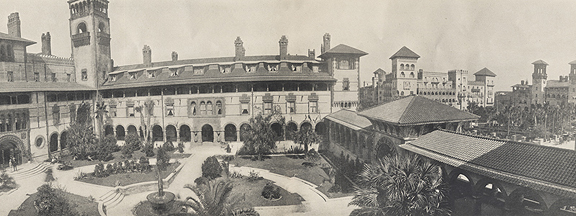
PANORAMA OF COURT OF HOTEL PONCE DE LEON, HOTEL ALCAZAR, AND HOTEL CORDOVA —
The Ponce de Leon, Alcazar, and Cordova Hotels were the cornerstones of Henry Flagler's resort empire in St. Augustine. All three establishments offered luxurious amenities to visiting aristocrats and tourists. All three boasted grand architecture that was meant to evoke images of Old Spain, whilst the bountiful courtyards were reminiscent of tropical paradises.
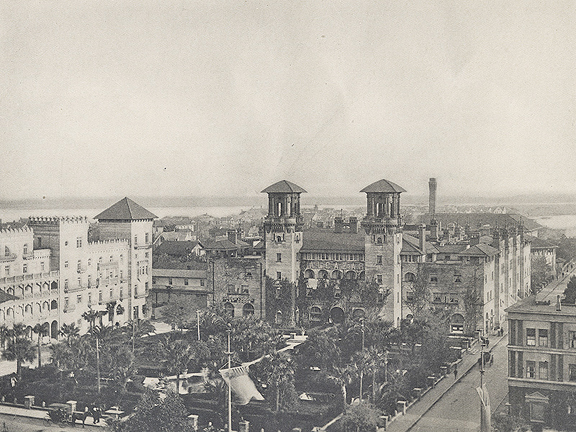
ALCAZAR HOTEL AND CORDOVA ANNEX FROM TOWER OF PONCE DE LEON —
This aerial view of the Alcazar Hotel (now home to the Lightner Museum) shows just how prominent landscaping was in Henry Flagler's resorts. The courtyard of the Alcazar Hotel is filled with tropical plants, and large vines were allowed to climb the walls of the hotel.
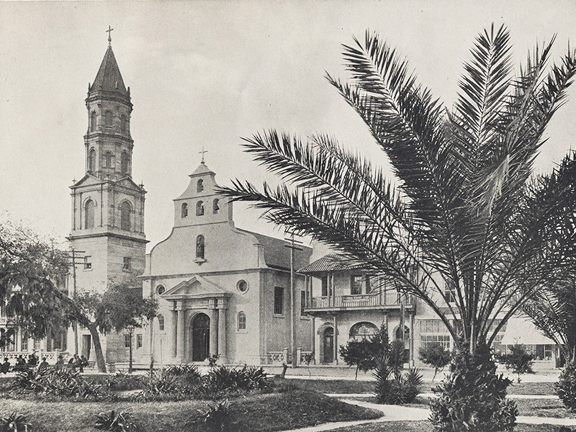
OLD CATHEDRAL —
The Cathedral Basilica of St. Augustine is the current home of the first Catholic Parish in North America, which was founded when Pedro Menendez founded the city in 1565. This image shows how the Plaza de la Constitución has changed, as well.
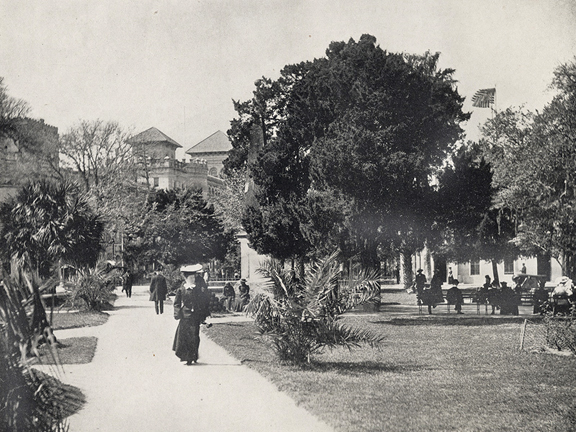
IN THE PLAZA —
St. Augustine's Plaza de la Constitución is still an epicenter of local and tourist activities. It seems that even (perhaps especially) in the late 1800s, people sought shade to beat the heat.
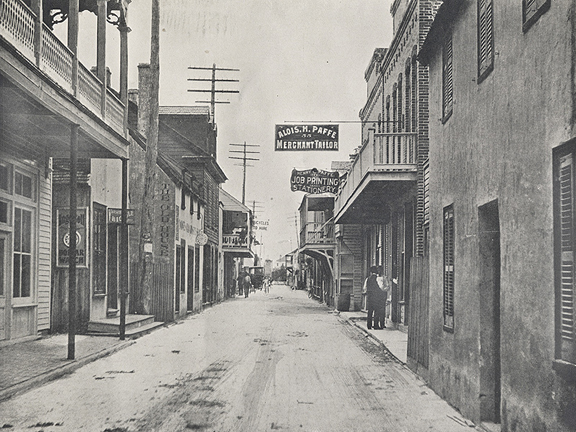
ST. GEORGE STREET —
Just south of the City Gates, St. George Street is one of St. Augustine's main streets for shopping. Old photos of city streets, like the one above, show valuable snippets of daily life from the past.
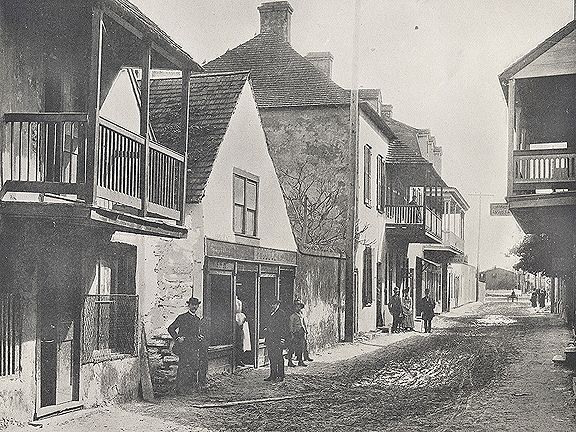
CHARLOTTE STREET —
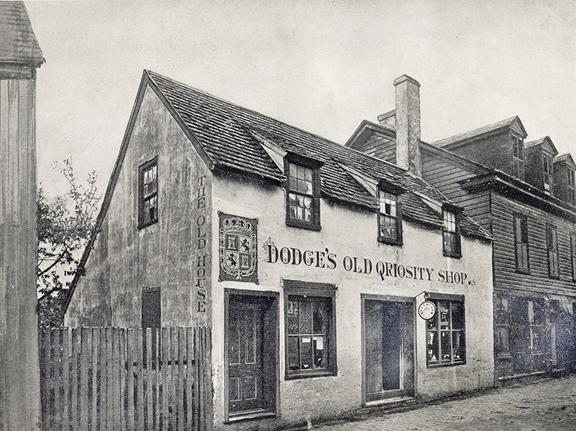
THE OLD HOUSE ON ST. GEORGE STREET —
Located on St. George Street, the building that once was 'Dodge's Old Qriosity Shop' is now known as the Paredes-Dodge House. The house that stands today was built during the Second Spanish Period in Florida, but the property has been occupied since the 1600s. Today, the Paredes-Dodge House is occupied by one of St. George Street's many gift shops.
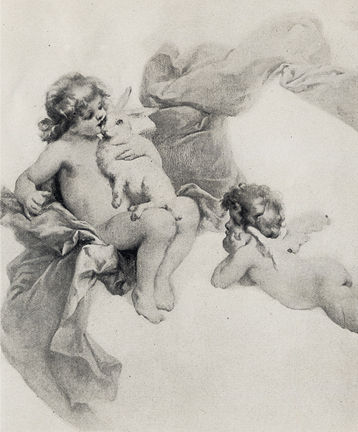
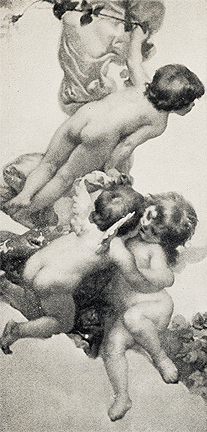
TOJETTI FRESCOES, HOTEL PONCE DE LEON —
The two above frescoes were painted by Virgilio Tojetti in the Grand Parlor of the Hotel Ponce de Leon on King Street in St. Augustine, Florida. Their delicate features and pastel colors were a perfect match for the room, which was meant to entertain female guests to the resort.
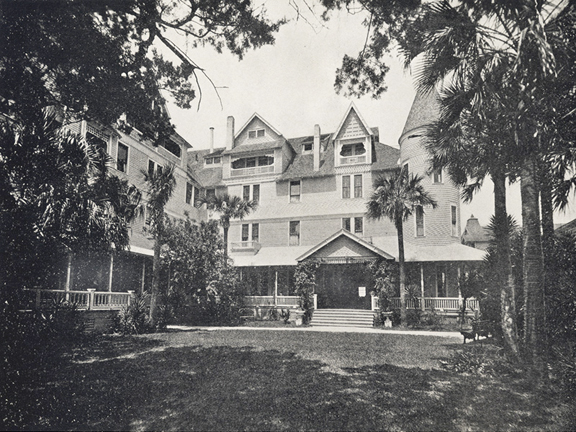
HOTEL MAGNOLIA —
According to advertisements of the time, the Hotel Magnolia was a luxurious and centrally located hotel on St. George Street.
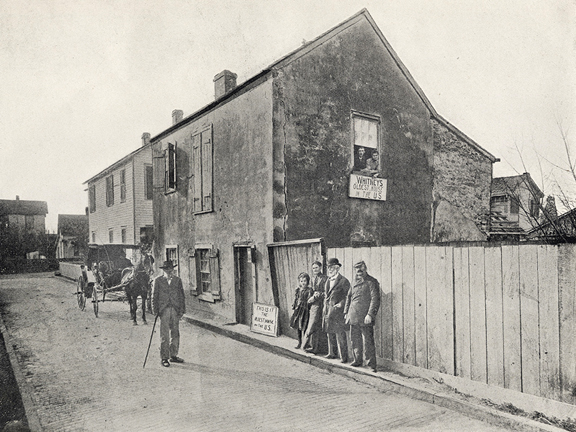
THE OLD HOUSE —
Once known as 'Whitney's Oldest House' this photograph shows what the Don Toledo/ Gaspar Papey House looked like in the late 1800s / early 1900s. Located on Aviles Street, this building is now a part of the Sisters of St. Joseph convent/school complex on Aviles Street in St. Augustine.
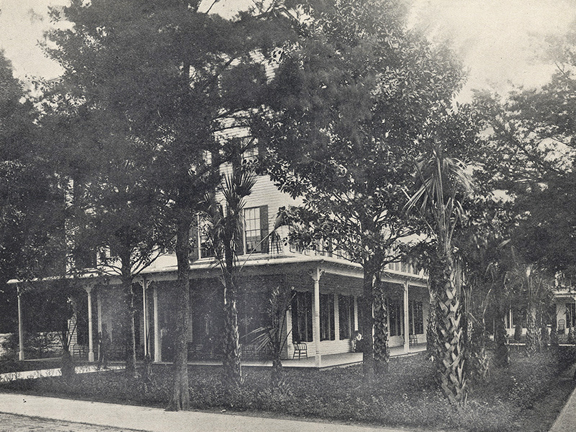
THE FLORIDA HOUSE —
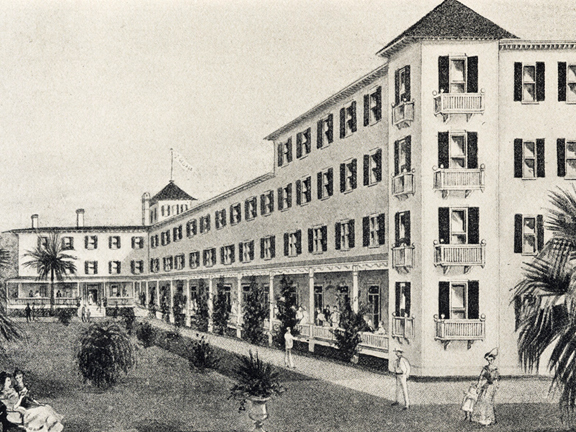
HOTEL ST. GEORGE —
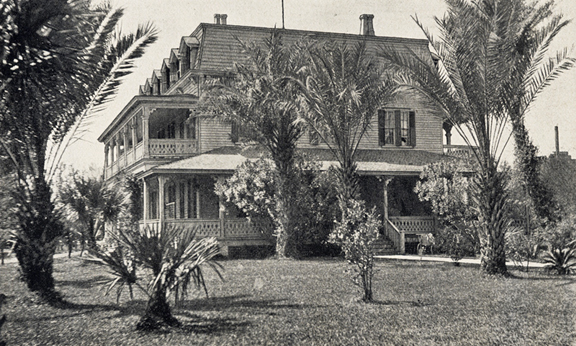
THE BUCKINGHAM —
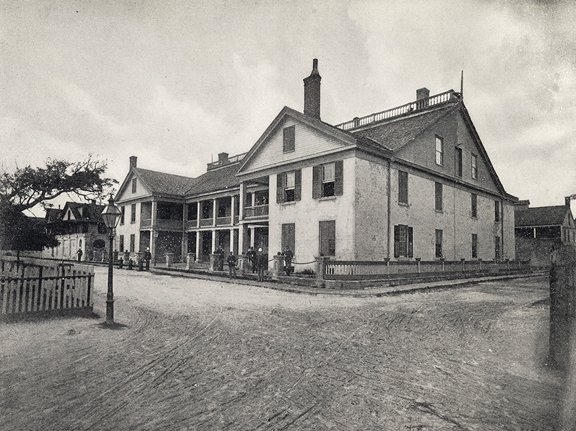
ST. FRANCIS BARRACKS, FORMERLY FRANCISCAN CONVENT —
Now the headquarters of the Florida Army National Guard (which is arguably the oldest branch of the National Guard in America), the above building has been a central player in the history of St. Augustine.
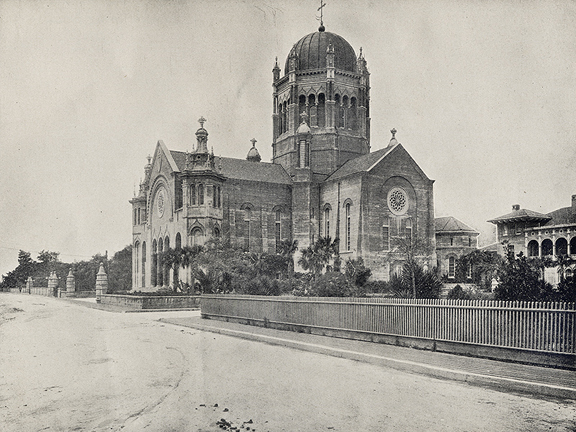
MEMORIAL PRESBYTERIAN CHURCH —
Memorial Presbyterian Church was built by Henry Flagler in 1890 to memorialize his daughter, Jennie Louise Flagler Benedict. The congregation at this church is the oldest Presbyterian congregation in the state of Florida.

